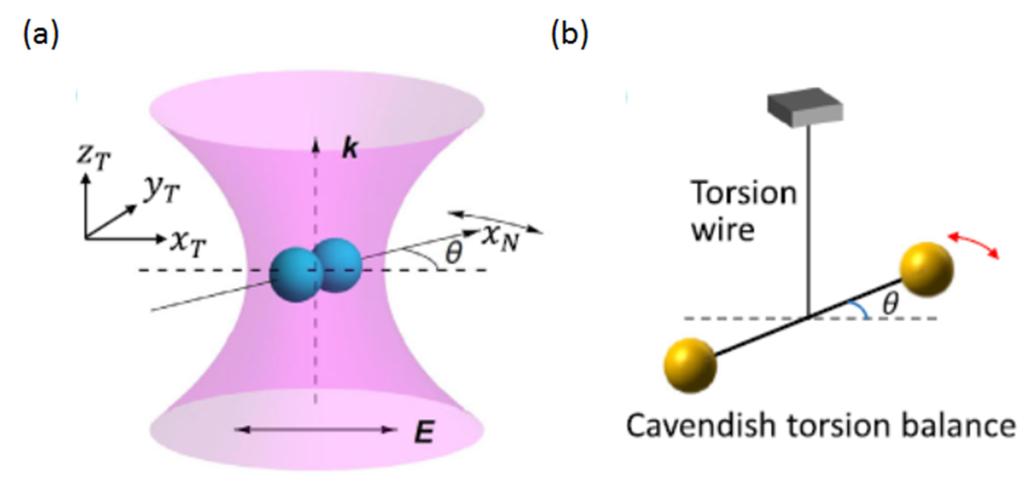Associate Prof. Han Qinkai, from State Key Laboratory of Tribology in Tsinghua University, Prof. Li Tongcang from Purdue Unviersity and Prof. Ma Renmin from Peking University have worked together to achieve the fastest man-made rotor in the world. It can rotate to more than 60 billion times per minute (greater than 1 GHz), which is more than 100 thousand times the speed of high-speed dental drill. The research paper “Optically Levitated Nanodumbbell Torsion Balance and GHz Nanomechanical Rotor” has been published in Physical Review Letters recently. This breakthrough work has been widely reported by the major media in the world, such as Xinhua News, NBC News, FOX News, etc.

Figure 1 Ultrafast rotating silica nanodumbbells

Figure 2 Nano quantum Cavendish torsional balance
The joint research team synthesized high purity nanoscale silica dumbbell by using both chemical and physical methods (diameter about 170 nm, see the SEM picture in Figure 1 (a)); under high vacuum conditions, the circular polarized laser was used to levitate the silica nanodumbbell, and drive it to rotate at high speed (see Figure 1 (b)); when the pressure was about 7.9×〖10〗^(-5) Torr, the rotation speed reached 1.1 GHz (see Figure 1 (c)). On the one hand, such ultrafast nanoscale rotator can be used to study the fatigue strength properties of nano-materials under extreme conditions (in our study, the relative tangential speed of nanodumbbell’s two spherical centers has exceeded 1000 m/s!). On the other hand, the fast-rotation rotor could also be used to probe the vacuum friction. Modern physics holds that because of quantum fluctuations, vacuum is not empty, but full of virtual particles. These virtual particles can give a weak rub force to a high speed rotating object, which is called the vacuum friction. In addition, when the circular polarized laser was changed to a linearly polarized laser (see Figure 2(a)), the team observed torsional vibrations of the nanodumbbell, which is similar to the classical Cavendish torsion balance (see Figure 2(b)). Such observation is of great significance for the detection of Casimir torque caused by the quantum fluctuations of vacuum and the quantum nature of gravity.
Phyisical Review Letters is a highly authoritative journal published by the American Physical Society (APS). Jonghoon Ahn, the first author of the paper, is a doctoral student of Prof. Li Tongcang. Associate Prof. Han Qinkai, Prof. Ma Renmin and Prof. Li Tongcang are the co-corresponding authors of the paper. The research was supported by the Natural Science Foundation of China and the State Key Laboratory of Tribology.
Paper URL:https://journals.aps.org/prl/abstract/10.1103/PhysRevLett.121.033603
Xinhua News URL: http://www.xinhuanet.com/science/2018-07/23/c_137342650.htm
NBC News URL:https://www.nbcnews.com/mach/science/tiny-dumbbells-spin-60-billion-times-minute-may-help-solve-ncna894121
FOX News URL: http://www.foxnews.com/science/2018/07/25/what-in-whirled-tiny-floating-dumbbell-rotates-60-billion-times-per-minute.html


